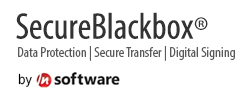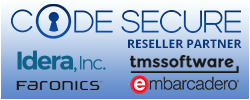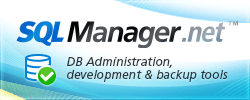MSSQL DAC 2.55
In category
DB-Aware Components > Direct DB Access > MS SQL
Description
The suite of eight data-aware components:- TSQLCE_Database
- TSQL_Database
- TSQL_Dataset
- TSQL_UpdateSQL
- TSQL_Query
- TSQL_StoredProc
- TSQL_Function
- TSQL_CreateAlterDrop
You will be amazed at the potentiality and efficiency of MSSQL DAC components that set a new standard, unattainable for other components being usually heavy, overgrown and complicated. TSQL_Dataset is the only dataset component that besides simplest (and slowest together) static data access method, supports dynamic data access and partial (growing) records fetching (IN MANY CASES EVEN HUNDREDS TIME FASTER THEN STATIC METHOD; see Readme.txt and Readme_comparision.txt for more details).
TSQLCE_Database is a component for access of Microsoft SQL Servers Compact Edition ver 3.x; important properties:
- ClientDriver: (cdAutoDetect, cdSqlSrvCe__3_5, cdSqlSrvCe__3_0);
- the best way is to install both versions (3.1 and 3.5) and to use the default cdAutoDetect value, because TSQLCE_Database will choose for You the proper driver to connect to the database
- ConnectOptions: a set of three options
- coCreateIfNotExists
- coCreateEncrypted
- coOpenExclusive
for customizing the behavior of TSQLCE_Database during establishing
connection to the database
At design time TSQL_Database detects all running MS SQL Servers very fast and let You choose server and instance name from the drop down list of ServerName property.
TSQL_StoredProc :
- implemented all MS SQL Server procedure features i.e. output parameters and multiple rowsets
- returned rowsets (if any) can be accessed (at run-time only) by public property
- Rowsets[RowsetNo] : TSQL_Dataset
- published property FreeRowsetOn_CDS_read: applied when a Rowset is used as data supplier for ClientDataSet - if set to True (default) then all stored records are released from memory after ClientDataSet has finished getting records from the rowset
- preparing and unpreparing is performed automatically
- the only thing You need to do is to assign parameter values and call ExecProc method
- the fastest SQL Server data access (when Unidirectional = True, also as replacement for all dbExpress drivers; when used as data supplier for ClientDataSet, TSQL_Dataset automatically sets Unidirectional to True and allocates 0 bytes for fetched records)
- one component for all recordsets, ReadOnly and not ReadOnly i.e. physical Tables
- You can also select from Table-valued functions, for example: SELECT * FROM aTable_ValuedFunction(:par_1,:par_2,:par_3,:par_N)
- public property TableValuedFunction lets You choose required function from the dropped down list at designtime
- published property SQLStatement is divided into four sections: SELECT...FROM... , WHERE , GROUP BY , ORDER BY
- statements based on one table with joined other recordsets ARE TREATED AS TABLES i.e. NOT READONLY DATASETS
- three strategies for accessing of data:
- daStaticAccess (nonTable Datasets are always accessed in this manner) - all fields of fetched records are stored in memory; this is the conventional and the slowest method of data access)
- daDynamicAccess - purely record identifying fields are stored in memory (if there is no primary/unique key / Identity field for the table then it is marked as ReadOnly)
- daPartialFetch - all fields are stored in memory but records are fetched and appended in progressive manner during each call of one of search method (i.e. Locate, LocateNearest, FindKey, FindNearest) so You have the guarantee that searched records are fetched
- in dsInsert state, TSQL_Dataset assigns for You MasterFields values to appropriate LinkedFields automatically
- You can use Borland Field Link Designer at design-time to set relationship between master-detail fields
- decimal fields up to size 38.x (stored in packed format with minimum memory allocation as well)
- each SQL_VARIANT fields is created as TmVariantField (a little bit improved TVariantField descendant) and handled (read and write) as native SQL type, for example even if field value is set AsString = '2001-01-01 12:34:56' it wil be stored as SQL_DATETIME
Informations
- Status: Trial (work while IDE is running)
- Source: FNC
- Size: 1115260 - 1134008kB
Platforms:
- Delphi 2006 (Win32)
- Delphi 2007 (VCL)
- Delphi 6
- Delphi 7
















